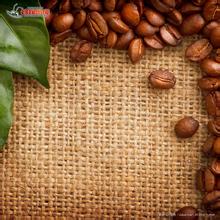What is the treatment of raw coffee beans? how long can raw coffee beans be stored?
Green coffee beans can be processed by natural washing, and unroasted beans can be stored in a sealed place without direct sunlight. This process is the easiest. The fruit begins the sun drying process without treatment after picking. This is the oldest treatment in existence. This method is still used today in places such as Ethiopia and Brazil. Natural solarization is most common in areas where water is scarce. The drying process usually lasts about 4 weeks. The method of processing must be very careful to ensure that the coffee does not lose any flavor. Natural solarization requires an extremely dry local climate. In some areas, people use dryers to assist in the drying process (the hot air of the dryer can speed up the drying process and help people control the drying degree).
Natural solarization preserves the fruity aromas of the coffee fruit. When you taste this coffee, you will find that the coffee is full of fruit aroma and the taste is brighter. After drying, special machines are used to remove the outer crust. This process is called "dry Milling."
What are the processing methods for coffee beans?
washing method
During the washing process, the peel and pulp of the fruit are separated from the coffee beans by a special desizer. The beans are then fermented in a fermentation tank so that the mucous membrane is no longer slimy. Sugar in mucous membranes will be broken down during fermentation. Depending on the fermentation method, the fermentation time is usually 12 hours to 6 days (some growers ferment coffee beans using a watering system). This method is known as the Kenyan method and usually lasts several days. Deciding when to stop fermentation is extremely important. Once coffee is overfermented, the taste of coffee becomes too sour. Once the mucilage has broken down, it is washed away with large amounts of water (wastewater from green bean processing is considered a source of pollution for the coffee industry). Today, advanced technologies are being developed in many regions to recycle and filter the wastewater generated by this process). Shampoo originated in the 19th century and is also known as "wet processing."
A tightly controlled fermentation process increases the acidity of the coffee and is reflected in the final taste of the coffee. However, as long as the coffee is washed immediately after the fermentation process, the taste of coffee can be improved and it has a bright acidity.
What are the processing methods for coffee beans?
3
natural washing
This method is extremely common in Brazil. Natural washing is very similar to water washing, except that natural washing removes the mucous membrane from the coffee surface with a high-pressure washing machine, thus skipping the fermentation process. Several green coffee processing companies in Brazil and Colombia have patented the method and become local natural water processing monopolies. This method uses much less water than shampoo, so some people are accustomed to calling it "Semi-Dry". Since coffee beans are not fermented, there is no (or only a very low) risk of fermentation, and the overall quality of coffee is more constant. Unfortunately, coffee tends to be bland because it is not fermented. Therefore, growers do not use natural washing methods for ultra-high quality coffee seeds. Most green bean purchasing companies also rarely buy coffee that has been processed by natural washing

Important Notice :
前街咖啡 FrontStreet Coffee has moved to new addredd:
FrontStreet Coffee Address: 315,Donghua East Road,GuangZhou
Tel:020 38364473
- Prev

The treatment of Costa Rican coffee, etc.
What are the requirements for the origin of Costa Rican coffee, and what is the best way to grow Costa Rican coffee? the most famous is mountain Costa Rican coffee, which tastes mellow and neutral, and it can be boiled directly, or mixed with other kinds of coffee beans into comprehensive coffee, it is also a good choice. Other kinds of Brazilian coffee, such as Rio and Parana, can be used in large quantities because they don't need too much care.
- Next

Hand-selected coffee beans how to distinguish between good and bad coffee beans
Coffee machine: according to your description, your coffee machine may be a traditional siphon coffee machine or a general drip coffee machine. You can look for pictures online. Roast raw coffee beans: don't use the oven. In a clean, dry pan (do not put oil), stir-fry the raw coffee beans at a low temperature for 10-30 minutes. You can judge the specific time by trying the beans (chewing directly).
Related
- Does Rose Summer choose Blue, Green or Red? Detailed explanation of Rose Summer Coffee plots and Classification in Panamanian Jade Manor
- What is the difference between the origin, producing area, processing plant, cooperative and manor of coffee beans?
- How fine does the espresso powder fit? how to grind the espresso?
- Sca coffee roasting degree color card coffee roasting degree 8 roasting color values what do you mean?
- The practice of lattes: how to make lattes at home
- Introduction to Indonesian Fine Coffee beans-- Java Coffee producing area of Indonesian Arabica Coffee
- How much will the flavor of light and medium roasted rose summer be expressed? What baking level is rose summer suitable for?
- Introduction to the characteristics of washing, sun-drying or wet-planing coffee commonly used in Mantenin, Indonesia
- Price characteristics of Arabica Coffee Bean Starbucks introduction to Manning Coffee Bean Taste producing area Variety Manor
- What is the authentic Yega flavor? What are the flavor characteristics of the really excellent Yejasuffi coffee beans?

